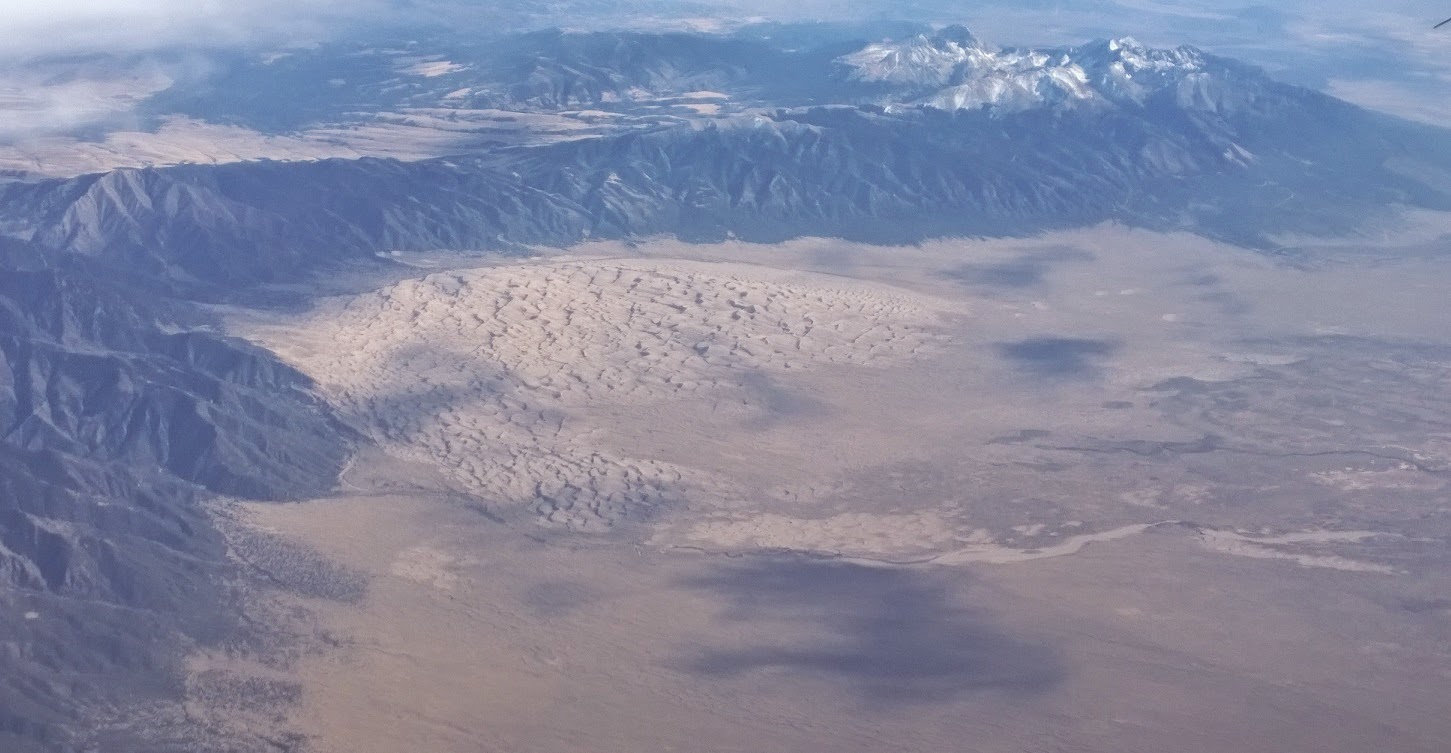About 60 miles south of Wendover is a beautiful range of 12,000 peaks, alpine meadows and streams with Lake Bonneville Cutthroat Trout. (These fish have been in these creeks for 10,000-12,000 years, since Lake Bonneville, because the creeks now flow out into the desert and dry up - there is no connected waterway for the fish to traverse elsewhere. They've managed to survive out here for many millennia, disconnected from everything else.)
I've been the Deepcreeks before, and most of the canyons and creeks are on the east side of the range, so this time I decided to look at the range from the west, which is adjacent to the Goshute Indian Reservation at Ibapah, Utah, right next to Nevada. The Ibapah Valley is actually pretty prosperous, with more than a few ranches and farms, even an airstrip right in Ibapah.
There was a dusting of snow on Haystack Peak, with Ibapah Peak on the right, but you can see the west side of the Deepcreeks has pretty short canyons:
Plenty of granite in the Deepcreeks, but from this side, I think you may need to get permission from the Goshute tribe to access these rocks:
Plenty of pine, stands of aspen, and 12,000 peaks above the timber line, with snow:
Then, I went west into Nevada, into Antelope Valley, where at sunset I could see Mount Moriah, the northern part of the Snake Range (which includes Wheeler Peak and Great Basin National Park):
I drove east through Pleasant Valley, back into Utah and went north from Partoun, past Trout Creek, close to Callao to find a spot on the foothills to settle in for the night, in the back of Taco. It was pretty nippy, and with summer gone, the night was long, but there were a billion stars to see, and the Milky Way stood out.
This is what Haystack Peak and Ibapah Peak look like from the foothills on the east side of the Deepcreeks:
From the remote farming / ranching community of Callao, the Deepcreeks offer some impressive cliffs.
No trip to the Deepcreeks from Wendover would be complete without a trip by what's level of the tiny mining community at Gold Hill:
The selection of merchandise for sale at Gold Hill is what you might call "limited". You'll need to drive 40 miles north to Wendover if you want to do any kind of real shopping:








